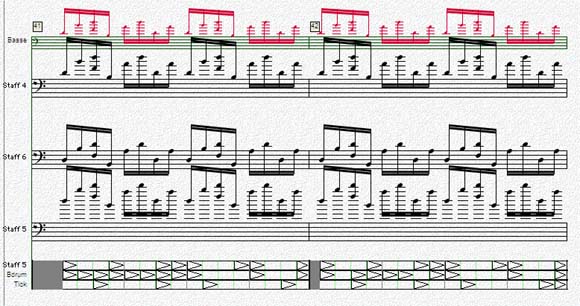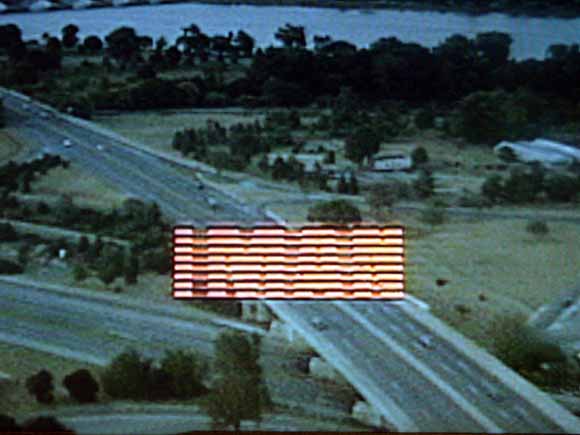View current page
...more recent posts
In the comments to my previous post about whether you have to know code to make art with digital tools, Mark says "The way I read the [BEIGE] interview, the [BEIGE'rs are] interested in programming because they are interested in complete control. Do you have to stretch your own canvas to be a painter? Well, if you're tired of rectangles, perhaps."
My reply:
That's true--but some artists were tired of rectangles and made their own, oddly shaped supports. An analogy I've used is the purist artist who thinks you have to grind your own pigment to paint, either because store bought colors aren't good enough or out of some strict truth-to-materials dictate. I think that applies to John Maeda--his "if you aren't programming you aren't using the computer" rap has a whiff of the purist ascetic about it. The BEIGE'rs are a little more complicated. They're pretty much admitting that the only way they can "own" the medium is to use old computers that they can comfortably hack, so there's a built-in humility or pathos factor there. Also, they're rejecting the store-bought colors not to show their superiority to us mortals,1 but because there's something innately offensive about always having to use Microsoft Color TubesTM (or whatever) to make art. Maeda uses his dual art & programming background as a critical shield, in effect saying to artists who don't like his work, "yes, but you know nothing about the programming" and to engineers, "yes, but you know nothing about art." With the BEIGE'rs, there's no such mystification: by using the old NIntendo games as a starting point, viewers have an accessible point of entry and can intuitively "get" what they're doing.
1. Unless you're Markus Popp.
Does one have to write code to make art or music with digital tools? Two proponents of code are designer/MIT Media Lab professor John Maeda (on the hi-fi end of the digital spectrum) and the BEIGE crew (on the low end--for a manifesto see this interview). The former may be a good programmer but he's not a particularly good artist, as anyone who saw his shows at Cristinerose Gallery will attest, whereas the BEIGE-rs are good artists arguably independent of their hacking skills. The beef about using consumer software is that an engineer makes aesthetic choices for you. But there is a whole side of digital art production devoted to thwarting the programs through non-coding means---by physical interventions like damaging CDs or analog tricks such as messing with the audio or printer output or simply using the programs "wrong"--overstressing them till they start producing intriguing gobbledegook. If you limited yourself to coding you'd miss out on other fun ways to make Photoshop and MAX-MSP break down.
UPDATE: This discussion continues in these follow-up posts: 2 / 3 / 4 / 5 / 6
.

"Something Clicked" - [mp3 removed].

Just noticed Ted Rall's evisceration of Art Spiegelman's 9/11 book. This 20 dollar, 42-page pamphlet, padded out with thick paper stock and reprints of early 20th Century comic strips (ostensibly to show the difference between New York now and then, or whatever) sounded wretched from the reviews I read, which were mostly respectful prior to Rall's blog post. Rall, you may remember, complained loudly in a 1999 Village Voice article that Spiegelman had become a corrupt power broker of the comics world during his tenure at the New Yorker. Spiegelman left the magazine after its post-9/11 turn (further) to the right, which was laudable, even though his wife continues to hold a key position (for artists) there. The book sounded icky for framing the tragedy in terms of Spiegelman's personal meltdown and self-loathing so I didn't go near it, even to free-read it at the bookstore. Rall's take is completely vicious, but for Spiegelman to compare himself, living in a Tribeca loft after 9/11, to a German Jew staying in Berlin after Kristallnacht seems a bit...overwrought.
[The image above is not related--I put it in so the post had a 1987 reference--semi-inside joke.]
We already know that the U.S. President doesn't exactly play fair (unloading Harken Energy stock on inside information, artificially deflating the price of baseball stadium land, the 2000 election) so allegations that he has an ear-canal audioprompter telling him what to say should come as no surprise. The website Is Bush Wired? and Dave Lindorff's pieces for Salon and Counterpunch make a convincing case that not only does the little man use the prompter in speeches, but also answering tricky questions in press conferences and even to help him perform (poorly) in his first debate with John Kerry. TV stills have more than once caught the outline of a squarish lump on his back, under his suit coat, and some cable cameras have accidently picked up audio feeds from his unseen handlers. It would be great if this became a campaign issue but it's doubtful given how much the press loves him. If he gets a second term (no! no!) we will somehow have to come to terms with the fact that he's our first Bionic President.
UPDATE: Unbelievably, the New York Times covers this (" The Mystery of the Bulge in the Jacket"). I guess once Salon was on board, it became OK. And the reporter is Elizabeth Bumiller, who generally writes love letters to Bush.
UPDATE 2: Dave says George Stephanopolous mentioned it on the Sunday talk shows but just treated it as a joke. As the Daily Howler would say, "once again your media is clowning."
UPDATE 3: This Bush interpreter has heard the President speak perfectly without notes on subjects of great complexity, leading the interpreter to believe he's wired. But what works in a speech context could be a liability in the debate context--listening to two people at once is hard.
From E. Worthy, Early 21st Century Art (New York: Kramer Publishing 2035):
"The death of so-called site specific art came in 2004, at a talked-about show most people never saw. The concept was that artists would 'respond' to Eero Saarinen's somewhat overwhelming 1962 terminal building at Kennedy Airport (considered high Modernist kitsch by some architects), an activity with roughly the same significance as small lice-eating birds 'responding' to a rhinoceros. It consisted of such obvious and expected gestures as running political slogans on the defunct terminal's arrivals and departures board, piping sound art through the intercom, and so forth. Once admitted to this vast playground from their usual physically constraining warrens in Chelsea and Williamsburg, and perhaps because the art was so familiar as not to hold anyone's attention, the artists went berserk at an opening night party and trashed the terminal."New York Times report
Installation shots of a Vanity Fair party two nights before "amok night"--thanks to Bill for the pics and timeline
 Last night at Dorkbot NY, the informal monthly gathering subtitled "People Doing Strange Things with Electricity," three people gave presentations. Left is my accidental .GIF (I thought I was making an MPEG movie) of James Clar's 3D Display Cube, a device that uses a hideous amount of computing power to render charmingly lowtech 3-D moving sculptures on 1000 LED lights in a 2 foot cube. Think 3D Jim Campbell. Mary Flanagan projected complex abstract patterns generated from the phonemes and word choices of a several month run of
emails between her collaborator Andrew Gerngross and his ex-girlfriend. It was unclear whether the, um, relationship between the data and the display was purely aesthetic, or if there were other connections or conclusions to be drawn. Fang-Yu (Frank) Lin gave a crisp power point talk on "channeling the internet though a robotic typewriter." His artwork was exactly as described: a clunky hybrid of an old manual keyboard and a teletype machine, which acts a kind of spirit medium, bringing you messages from "the internet," a quasi-mystical entity. You type in a question or statement, and hidden hardware and software search for words (in chatboards, blogs, news stories) that might logically or literally follow from what you wrote. Of course, the result--lines of text or ASCII pictures spit out of the teletype--are usually tangential (at best) to your request. Lin uses a hybrid search engine to pull up content, but casts a narrow net, apparently grabbing the first thing remotely connected to your search. The piece was almost aggressively dumb, and retro, and pseudoscientific, a kind of satirical antidote to the globalist, futurist slogans routinely bandied about by tech companies and new media visionaries (cf. Maciej Wisniewski's netomat). I immediately thought of Scott Bukatman's essay "Gibson's Typewriter," which considers the global information sea change through the metaphor of William Gibson banging out Neuromancer on a manual typewriter. Lin's presentation echoed one of Bukatman's themes--that mechanical writing was an earlier and no less earth-shaking "information revolution." The fixation on the typewriter is also in sync with current trends such as whipping out giant old cell phones purchased on Ebay to impress potential dates.
Last night at Dorkbot NY, the informal monthly gathering subtitled "People Doing Strange Things with Electricity," three people gave presentations. Left is my accidental .GIF (I thought I was making an MPEG movie) of James Clar's 3D Display Cube, a device that uses a hideous amount of computing power to render charmingly lowtech 3-D moving sculptures on 1000 LED lights in a 2 foot cube. Think 3D Jim Campbell. Mary Flanagan projected complex abstract patterns generated from the phonemes and word choices of a several month run of
emails between her collaborator Andrew Gerngross and his ex-girlfriend. It was unclear whether the, um, relationship between the data and the display was purely aesthetic, or if there were other connections or conclusions to be drawn. Fang-Yu (Frank) Lin gave a crisp power point talk on "channeling the internet though a robotic typewriter." His artwork was exactly as described: a clunky hybrid of an old manual keyboard and a teletype machine, which acts a kind of spirit medium, bringing you messages from "the internet," a quasi-mystical entity. You type in a question or statement, and hidden hardware and software search for words (in chatboards, blogs, news stories) that might logically or literally follow from what you wrote. Of course, the result--lines of text or ASCII pictures spit out of the teletype--are usually tangential (at best) to your request. Lin uses a hybrid search engine to pull up content, but casts a narrow net, apparently grabbing the first thing remotely connected to your search. The piece was almost aggressively dumb, and retro, and pseudoscientific, a kind of satirical antidote to the globalist, futurist slogans routinely bandied about by tech companies and new media visionaries (cf. Maciej Wisniewski's netomat). I immediately thought of Scott Bukatman's essay "Gibson's Typewriter," which considers the global information sea change through the metaphor of William Gibson banging out Neuromancer on a manual typewriter. Lin's presentation echoed one of Bukatman's themes--that mechanical writing was an earlier and no less earth-shaking "information revolution." The fixation on the typewriter is also in sync with current trends such as whipping out giant old cell phones purchased on Ebay to impress potential dates. 